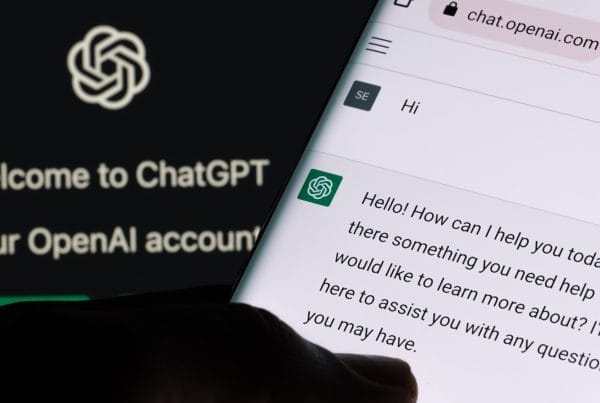Plagiarism is a growing issue in the academic and creative industry. And every day, it’s becoming easier to perpetrate, especially with the quick access to the internet where anyone can input their questions on search engines like Google and have information that matches their search intent pop up on the first page.
Plagiarism is simply copying somebody else’s work and passing it off as your own. It’s often common to see students and writers use the work of others without giving them credit. Some do this deliberately, while others do it accidentally, either because they forgot or failed to cite their work properly.
In fact, 36% of students and writers usually plagiarize other people because they:
- Lack time and can’t sit to write on their own
- Don’t know how to cite or reference their work properly
- Lazy and prefer the easy route
In this guide, we discussed how to prevent plagiarism. Whether you’re a teacher looking for ways to educate and curb the acts amongst your students or a publisher who wants to know how to identify and flag down plagiarized works so it doesn’t cost you your integrity, this quick guide is for you.
Table of Content
How to Prevent Plagiarism: A Quick Guide To Help Teachers and Publishers
- Educate students and writers about the implications of plagiarism
- Establish Strong policies against plagiarism
- Teach proper research citation and Referencing
- Encourage critical thinking and originality
- Use plagiarism detection tools
- Design assignments that discourage plagiarism
- Promote academic integrity
- Promote effective time management
- Follow up on suspicious cases
How to Prevent Plagiarism: A Quick Guide To Help Teachers and Publishers
1. Educate students and writers about the implications of plagiarism
Many students and writers are not aware that plagiarism can have adverse effects on their work and life. Through a storytelling approach, you can educate them on the meaning of plagiarism and its implications. You can also infuse real-life examples of plagiarism cases and the price they paid. That way, you can assess your students by asking them lessons they learned from the examples.
2. Establish strong policies against plagiarism
If possible, write out your policies against plagiarism and paste them on a notice board where everyone can see and read them. You can also create a poem or pledge that speaks against plagiarism and have your student recite it now and then. This would inculcate a sense of discipline in them.
3. Teach proper research citation and referencing
Frequently, people plagiarize because they lack the basic knowledge of how to research and write well. As a teacher or publisher, explain, in detail, the importance of citing and referencing their work. However, it is not enough to tell them, you have to show them examples of how to use different citations such as APA, MLA, and Chicago, including their guidelines. Also, show them the right way to write bibliographies and reference lists.
4. Encourage critical thinking and originality
Give your students or writers projects that require personal insight and opinions. For example, an essay on their future dreams and aspirations. Appreciate students who try their best with standing ovations or applause. This will foster a culture of academic excellence.
5. Use plagiarism detection tools
There are various plagiarism detection tools you can use to scan student’s work. Share the results with each person for them to see the percentage of uniqueness or plagiarism in their work as well as the areas they might need to revise and cite properly. We recommend the following plagiarism detection tools:
- Winston AI: This is the most convenient AI detector for written content. With 99.6% accuracy, it can tell the difference between a human-written text and AI-generated texts from chatGPT and Bard.
- Turnitin: is designed to identify when AI writing tools have been used in a student’s submission.
- Grammarly: detects plagiarism in your tests and checks for other writing issues like punctuation errors.
6. Design assignments that discourage plagiarism
While giving your students assignments, provide detailed information and make it known that you won’t tolerate any form of plagiarism in their submission. Additionally, you can give them assignments such as presentations (where they have to explain their thought process), group projects as well as an in-class test on previous assignments.
7. Promote academic integrity
Discuss the importance of ethics and have students sign integrity pledges. Also, reiterate your strong policies against plagiarism, thereby serving as a constant reminder for your students.
8. Promote effective time management
One major issue students face is time management. They procrastinate until the deadline is near before they start thinking of how to do their assignments. Hence, they have little time to research, write, cite, and edit their work. You can teach and encourage the importance of effective time management using illustrations.
9. Follow up on suspicious cases
Even with plagiarism pledges or policies daily, some students will still prefer to choose the easy route— copy and paste. So, if you give assignments and find anything suspicious, use Wiston AI to scan and investigate their submissions and policies to handle confirmed plagiarists.
Final Thoughts
Plagiarism is not something that should be normalized in any industry, including academic and creative. For students, some consequences follow such actions such as academic suspension, expulsion, or even failing a grade. We also talked about how to prevent plagiarism as teachers and publishers. Though plagiarism may sometimes happen accidentally, that’s why it’s crucial to use plagiarism detection tools like Wiston AI to scan your people’s work.



